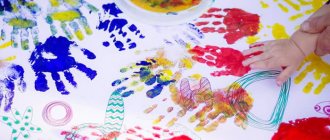History of watches for children. You can simply read a book about the history of watches to your child. You can let me watch a video. And we will study the history of watches through entertaining stories, pictures and experiments! Indeed, for the successful development of a preschooler’s mental abilities, it is best to give him the opportunity to discover new knowledge for himself, learn to solve cognitive problems, try to ask questions and answer them. This will be very useful to him both at school and in life! I invite you on a journey into the past and future of watches!
Our history of watches is very different from the dry text of a history textbook. She is lively and surprisingly interesting, inspiring and awakening new ideas! The story of a clock for preschoolers is structured as a dialogue with a child, as a joint search between an adult and a child for answers to questions. This story is not meant for one day. It can be used on a walk and at home, in kindergarten and at a party. I wish you creative communication with your baby!
Why do you need a watch?
Why do we need a clock? What do you think would happen if no one had a watch? If it is difficult for a child to answer a question, start thinking out loud yourself - fantasize (Here is what children can answer: “Dad wouldn’t know when to go to work”, “We would go to Misha’s birthday, but wouldn’t know the time. Come - and there’s no one there anymore. And we’d be upset,” “We’d go to the toy store, but it’s closed,” “We’d be late everywhere,” “We could miss the train or plane”)
How do you think people used to live without watches? How did people determine time? (Give your child the opportunity to think, think for yourself. After all, there was a time when there were no clocks. How did people get by without them?)
It turns out that there were clocks before, but in those ancient times they were different -... alive!!! Guess what a “live clock” is? What could they be? After asking a question, always pause to think and answer. If your baby is shy or at a loss, start thinking out loud and asking yourself questions. The child will gradually listen to you and reason with you. And then he will join the discussion and express his opinion. Let the child express the most fantastic assumptions, encourage him for them - he thinks and he expresses HIS OPINION, and this is VERY VALUABLE! It is much easier to retell someone else’s opinion to a preschool child than to have your own and express it in words. And in our modern life, the ability to formulate one’s point of view is the basis for success in many matters. After your child has dreamed up his imagination, tell him about a real live clock.
Presentation “What types of watches are there?”
Presentation for children of senior preschool age
“What kind of hours are there?”
Prepared by: Baryshnikova N.Yu.
Slide 1 – What types of watches are there?
Slide 2 - Sundial.
A long time ago, when there were no clocks, people knew the time by the sun. The sun has risen - it’s time for people to get up and get to work. It rose, passed halfway across the sky - people needed to rest and have lunch. And the sun hid behind the forests, behind the mountains, behind the blue sea - the time had come for people to go home to rest. And suddenly the man noticed the shadow that was falling on the ground from the tree. I looked closer and noticed that the shadow was not standing still. She moves after the sun. The day ended, the sun made a circle in the sky, and the shadow also ran.
A man watched, watched a shadow run around in a circle, and came up with a clock: he dug a pillar into the ground, and around the pillar he drew a circle, dividing it into parts. Each part was equal to one hour. The sun rose and the shadow of the pillar slowly moved in a circle, marking hour after hour.
This is how the first watches were invented. They were called solar. But people could not always use them. Why?
According to I. Melnikov
Slide 3 – Fire clock
They also measured time using a candle. It was divided into equal parts, each of which burned in about 1 hour. People could count time by knowing how many parts of a candle had burned and how many remained
Slide 4 - Hourglass.
People began to rack their brains to figure out how to come up with a better clock so that it would show time equally accurately during the day and at night, in winter and summer, and in any weather. And they came up with an idea.
This clock has no hands, no circle with numbers, no gears inside. They are made of glass. Two glass vials are connected together. There is sand inside. When the clock is running, sand pours from the upper bubble into the lower one, the sand has poured out - that means 3, 5, 10 minutes have passed. The clock is turned over and the counting of time continues.
People still use hourglasses, for example, doctors in clinics. During these hours, patients receive therapeutic procedures. Even chefs use them to boil soft-boiled or hard-boiled eggs.
According to M. Ilyin, S. Segal
Slide 5 - Water clock
.
Water was poured into a tall and narrow glass vessel with a hole at the bottom. Drop by drop it oozed from the hole. The water in the vessel became less and less. Marks were made on the walls of the vessel, which showed how much time had passed since the moment when water was poured into the vessel.
The water clock also turned out to be inconvenient, because it was necessary to constantly add water to an empty vessel. Sometimes milk was poured into the vessel instead of water. But what kind of joke could a milk clock play on a person?
6.7 slide - Flower Clock or Flower Clock
A long time ago, people noticed that some flowers open in the morning and close during the day, others open in the evening, others only at night, and during the day they are always closed. They open up not when they please, but at “their own” time. This is how the flower clock appeared. But they “walk” only in sunny weather.
Early in the morning, golden dandelions raise their heads towards the sun's rays, and behind them, wild carnations, rose hips, flax and others open their petals.
Flowers that opened their petals early begin to fall asleep during the day. In cloudy weather, the flower clock does not “work” at all. Their flowers remain closed. Therefore, people use them only to decorate flower beds.
A lot of time has passed since man invented a watch with a mechanism. I put a spring inside them, twisted it, and to prevent it from unwinding, I attached a gear wheel to it, it clings to another wheel and turns it. The second wheel turns the hands, and the hands show the hours and minutes. This is a mechanical watch.
They have a crown. When it is turned, a creaking sound is heard inside the clock. This is the spring being wound up.
There are watches without a spring. Instead, there is a small electric motor inside the watch, which is powered by a battery. There is no need to wind such a watch. Large electric clocks hang on the streets, towers, and subways.
But the man did not stop and invented a clock without hands. In such a watch, only the numbers glow. They change very quickly, just have time to see them. This watch is electronic
and operate, like electric ones, on batteries.
Slide 8 – There are also clocks on city streets and squares. They are installed on towers, station buildings, theaters and cinemas.
The most famous clocks in Russia - the Kremlin chimes
, installed on the Spasskaya Tower of the Moscow Kremlin. (
tower clock)
For several centuries, the Spasskaya Tower of the Kremlin has been decorated with clocks. A whole team of experienced watchmakers maintains their work, making sure that the watches do not lag behind and are not in a hurry. There are 117 stone steps leading to the chimes. Behind them begin the cast-iron steps of a spiral staircase leading to the eighth floor. The chiming mechanism is located here.
On December 31, with the first strike of the Kremlin chimes, the country enters the New Year. Having heard the chime of the famous clock, we wish each other happiness and congratulate each other on the New Year!
Slide 9 – A clock hanging on the wall is called a wall clock
Slide 10 – Wall clock (cuckoo clock)
A “cuckoo” hides in a clock made in the shape of a patterned wooden hut. Every hour the door of the house opens and the cuckoo appears on its threshold. She sings loudly: “Kuk-ku, kuk-ku,” reminding us of what time it is.
Slide 11 – Grandfather clock
. These clocks are on the floor. They are tall, massive, with heavy weights attached to chains, and with a melodic beat.
12 slide –
There are watches that can be carried in your pocket, mostly men prefer to wear them.
They are attached with a chain to a belt and worn in a trouser pocket. They are called - Pocket watches.
Slide 13 –
You probably have
an alarm clock at home.
Why do we need such a watch? — An alarm clock can be set for a certain hour, and with its bell or melody it will wake us up at the right time.
Slide 14 –
A clock that is usually placed on a table is called
a table clock
15 slide -
Watches can be
wristwatches
. They are put on the hand using a bracelet or strap.
Slide 16 – There are pendant watches and many other watches. The adults did not forget about the children. They came up with a fairy tale clock. Fairy tale clock
.
A fairy tale clock hangs on the wall of the Central Puppet Theater in Moscow. As soon as the hands freeze on the number twelve, the golden rooster sitting on a high pole turns importantly, spreads its wings and shouts throughout the street: “Ku-ka-re-ku-u!” - inviting people to the show. The ringing of bells is heard, followed by twelve measured strikes. Everyone is waiting for a miracle. And a miracle happens.
One after another, the doors of the magic houses open, and musicians, led by a bear, appear and begin to play cheerful music. The donkey dashes the strings of the balalaika, the ram stretches the bellows of the harmonica, and the cymbals ring in the paws of the bear. “Whether in the garden or in the vegetable garden,” the musicians sing cheerfully.
The musicians will play and hide in the houses again.
According to I. Melnikov, B. Radchenko
Slide 17 – Thank you for your attention!
Presentation for preschool children on the topic: “Development of time concepts”
DEVELOPMENT OF TEMPORAL REPRESENTATIONS IN SENIOR PRESCHOOL CHILDREN
Pedagogical Council
Performed
Teacher of MADO No. 150
Rybakova Irina Vladimirovna
Khabarovsk 2016
Theoretical aspects of the development of time orientation in children
- Currently, there is a rethinking of the goals, role and place of additional education of children in the entire system of domestic education and upbringing. One of the issues in studying the methods of mathematical development of preschool children is the formation of their temporal representations.
- A person faces the problem of time every day, every minute. Time is the regulator of all human activities; not a single activity takes place without the perception of time; the world around us exists in time. The specific features of time as an objective reality make it difficult for children to perceive it. Therefore, in pedagogical practice the question arises of how to show the time to a child.
The purpose of the work
is a study of the influence of didactic games on the development of temporal concepts in children of senior preschool age.
Achieving the goal will be facilitated by solving the following tasks:
— study theoretical approaches and methodological recommendations for introducing older preschoolers to time;
— study scientific and methodological literature on the perception of time by preschool children;
— test the author’s diagnostic methods to identify the level of formation of ideas about time;
— to develop a set of developmental activities for the formation of temporary concepts in children of senior preschool age
Object of study
:
the process of formation of temporal representations in children of senior preschool age.
Subject of research
:
didactic games in the formation of temporary relationships in a preschool child.
Hypothesis: if you use didactic games with children, the formation of temporary concepts in children will be more successful.
Research methods:
Theoretical:
analysis of scientific and methodological literature; study and analysis of diagnostic techniques.
Practical:
diagnostics of the level of assimilation of the concept of time; development of a set of developmental activities for the formation of temporary concepts in children of senior preschool age; analysis and interpretation of research results.
This work includes a whole range of tasks
— formation of primary practical orientation in time;
- formation of a sense of time;
— familiarization with individual “temporary” standards; - formation of initial ideas and concepts about some properties of time.
Sequence of training:
- 1.
We learn the names of the days of the week in order, connecting them with our activities
2.
Every day we say what day of the week it is today, yesterday, and tomorrow. - 3.
After studying the ordinal count, the days of the week are associated with the ordinal number.
.
Even older preschoolers have insufficient knowledge of how to measure time (using a calendar, clock). The names of time intervals (minute, hour) remain purely verbal and abstract for children, since life experience of activities during these periods of time has not yet been accumulated. .
Often preschoolers do not know the names of the days of the week and cannot determine their sequence. There is unevenness in remembering the days of the week; days that have a pronounced emotional connotation for the child are better remembered. This feature is also manifested in children’s memorization of the names of the months.
Time units: basic (day, week, month, year), derivatives (hour, minute, second). Children's acquaintance with units of time measurement should be carried out in a system of strict consistency, where knowledge of some time intervals, the ability to define and measure them, would serve as the basis for familiarization with subsequent ones and would reveal to children the essential characteristics of time: fluidity, continuity and irreversibility. Instruments for measuring time: watches (sandwatch, mechanical, electronic).
In the senior group, work begins with clarifying the concepts that were formed in the previous group. Particular attention is paid to learning to distinguish between parts of the day and determine the sequence. In this group, preschoolers should be able to determine the periods of the day, observing not only the work of people, but also the position of the sun.
To better remember the days of the week, you can use pictures, short poems, models, etc. In order for children to better remember the sequence of days of the week, we can recommend that parents reinforce these tasks at home.
Days go by, minutes melt away, Time flies by quickly What year is going on now - The calendar gives the answer What month it is - We look at the calendar.
Hours and minutes will pass, They will gather together in a day. They have twenty-four hours, and the hands work wonders.
At the beginning of the school year, children in the older group consolidate and deepen their understanding of such time periods as morning, afternoon, evening and night. As visual material, pictures or photographs are used that depict children in the process of various activities throughout the day: making the bed, morning exercises, washing, breakfast, etc.
Diagnostics of the level of assimilation of concepts of time
Diagnostics of the level of assimilation of concepts of time
Research base: MKDOU village. Sosnovka from September 2015 to March 2016.
The senior group of the kindergarten, including 15 people aged 5–6 years, took part in the study.
Purpose
:
to identify the level of mastery of the concept of time in children of senior preschool age.
Tasks:
- identify the level of formation of temporal representations in children of senior preschool age;
- develop a set of developmental activities for the formation of temporary concepts in children of senior preschool age;
- conduct a control diagnosis of the level of formation of temporal representations in children of senior preschool age.
The study was carried out in stage III.
Stage I –
diagnostics of the level of assimilation of the concept of time.
Stage II –
a set of developmental activities for the formation of temporary concepts in children of senior preschool age.
Stage III –
analysis and interpretation of research results.
A set of developmental activities for the formation of time concepts in children of the older group
Diagnostics showed results that are reflected in the diagrams
Let's compare the results of the first and second diagnostics
- At the beginning of the year, the children had a low level, but after a set of developmental activities, the high and average levels increased significantly. This means that the use of didactic games has a significant impact on the development of preschoolers’ time concepts.
- As we see, in the course of any lesson in kindergarten, it is possible to train children in the ability to perform work exactly within the specified time, teach them to determine the duration of this or that activity by time intervals and plan in advance the possible amount of work for a particular period of time in within 5-30 minutes. The educational value of such activities increases. In our experience, in such conditions, children worked more organized, were less distracted, regulated the pace of their activities and managed to do more. They did not waste time waiting for those who were lagging behind; everyone learned to finish their work at the same time, which is extremely important in terms of preparing for school. As the work progressed, the children’s sense of time and ability to regulate their activities over time became increasingly improved.
Time flies,
telling the children to grow up. The clock whispers like this: TICK-TOCK, TICK-TOCK!



